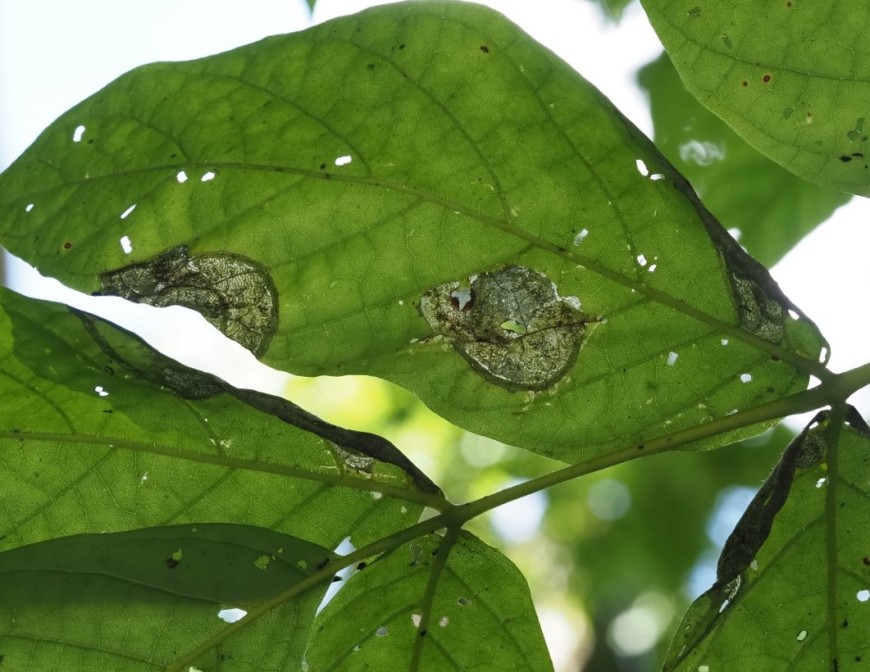African tulip beetle
History in the Pacific
A leaf-feeding flea beetle from Ghana was introduced to Rarotonga, in the Cook Islands, in 2021 and 2022 to control African tulip tree (Spathodea campanulata). This is the first time this beetle has been used anywhere in the world against African tulip tree. While it is still early days there are promising signs that the beetle is establishing. There are plans to also introduce the beetle to other parts of the Pacific where African tulip tree is a problem.
How would I recognise it and what is its lifecycle?
The adult beetles are smooth black and shiny and about 2-3 mm long. They feed on the upper leaf surface, removing leaf material of the host plant and leaving feeding holes. When disturbed the beetles are capable of rapidly jumping, like a flea.
The adults lay eggs on the leaf surface. The emerging larvae burrow into the leaf and mine within the leaf structure. They remove large amounts of leaf tissue without breaking the epidermal layers of the leaf. At 25°C it only takes about 3 weeks for an egg to hatch and develop into a fully-grown larva. Fully grown larvae are about 1 cm long. At this point they leave the leaf and drop to the ground and pupate in the soil and leaf litter, emerging as adults 2 weeks later.
Adult beetles become sexually mature after about 1 week, so that the entire life cycle takes about 6 weeks. In captivity, adult beetles can live for several months, so that there could potentially be 8 or 9 overlapping generations each year in the field.
Adult beetle
How does it damage African tulip tree?
The beetles feed on the leaves as adults, and mine the leaves as larvae.

Adult feeding holes and larval mines
Will it attack other plants?
The beetle only attacks African tulip tree and a couple of very closely-related trees which are uncommonly grown ornamentals in the Pacific.
How effective is it?
The impact of the beetle in the Cook Islands is being monitored. However, it is too early to assess its effectiveness as the beetle is still establishing and building up in numbers. Other leaf-mining beetles have successfully controlled weeds in the Pacific region. For example, a beetle (Uroplata girardi) has had major impacts on lantana.
How can I get the most out of it?
We do not yet know how fast the beetles disperse. But the adults are capable of flight and are likely to be good dispersers, so redistribution may not be required in many small islands.
If redistribution proves necessary, the beetles could potentially be shifted about by capturing adult beetles or by collecting mined leaves and attaching them to uninfested plants (e.g. by using a paperclip). The larvae will vacate cut leaves and burrow into fresh leaves.
Are there other natural enemies for this weed?
The African tulip mite (Colomerus spathodeae) was released in 2016 and has established in Rarotonga in the Cook Islands. The combined impact of both natural enemies is likely to be needed to reduce the invasiveness of African tulip tree. Natural enemies that could reduce seeding are currently being sought
